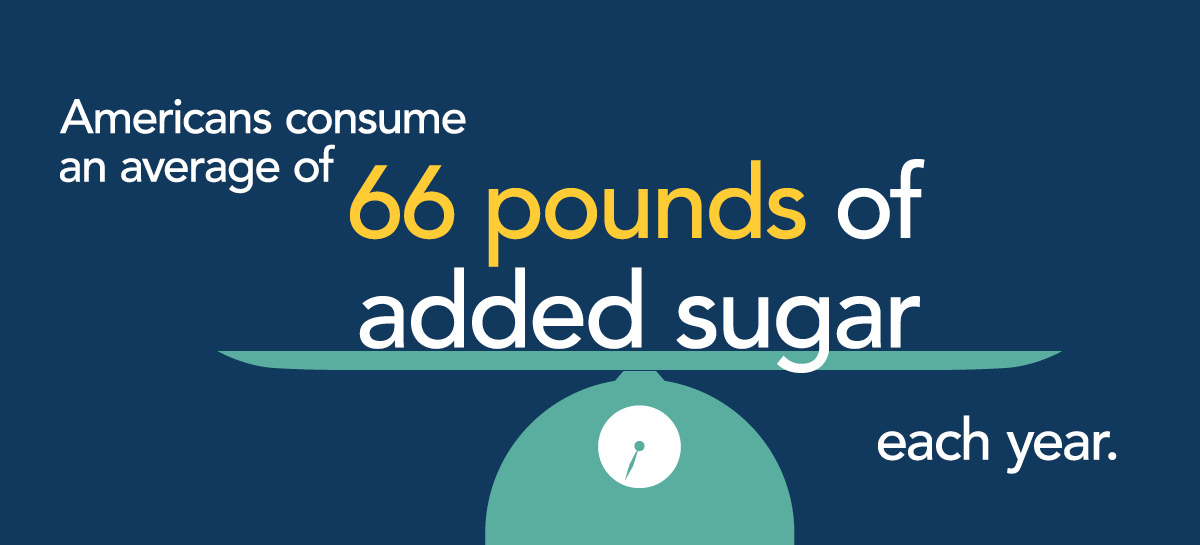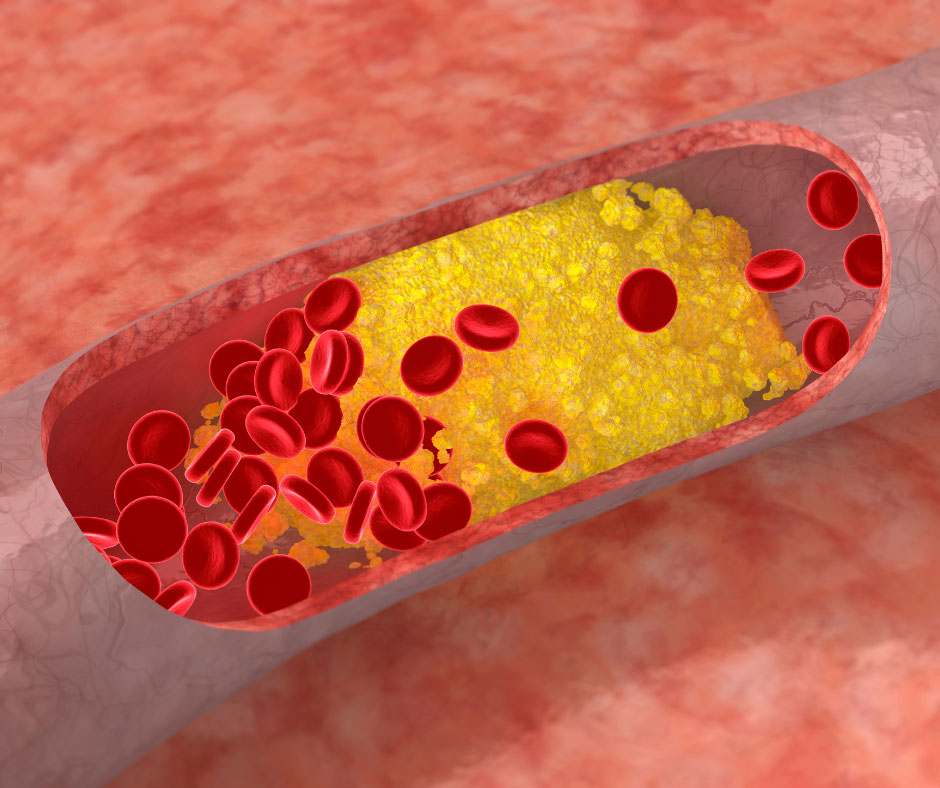We are surrounded by sugar. 80% of the foods in your supermarket contain sugar. Whole wheat bread can have a teaspoon of sugar per slice, ketchup contains 22.8% sugar. Even if you are not overweight, over consumption of sodas, candy, cookies and processed foods can significantly increase your risk of dying from cardiovascular disease.
According to a study published in JAMA: Internal Medicine, in April, 2014, those who got 17 to 21 percent of calories from added sugar had a 38 percent higher risk of dying from cardiovascular disease compared to those who consumed 8 percent of their calories from added sugar. The study factored in socio-demographic, behavioral, and clinical characteristics such as age, ethnicity, level of schooling, smoking, medication use, and others. The relative risk was more than double for those who consumed 21 percent or more of their calories from added sugar. In summary, the study found the odds of dying from heart disease rose in tandem with the percentage of sugar in the diet—and that was true regardless of a person’s age, sex, physical activity level, and body-mass index (a measure of weight).
Natural sugars are found in fruit as fructose and in dairy products, such as milk and cheese, as lactose. Foods with natural sugar have an important role in your diet they provide essential nutrients that keep the body healthy and help prevent disease. Fruit and unsweetened milk have vitamins and minerals. Milk also has protein and fruit has fiber. Refined sugar comes from sugar cane or sugar beets, which are processed to extract the sugar. It is typically found as sucrose, which is the combination of glucose and fructose. White and brown sugars are used to sweeten cakes and cookies, coffee, cereal and even fruit. Food manufacturers add chemically produced sugar, typically high-fructose corn syrup, to beverages and processed foods, including crackers, flavored yogurt, tomato sauce and salad dressing. Low-fat foods are the worst offenders, as manufacturers use sugar to add flavor. Most of the processed foods we eat add calories and sugar with little nutritional value.
How the body metabolizes the sugar in fruit and milk differs from how it metabolizes refined sugar and high-fructose corn syrup. When a person consumes too much processed sugar, the liver becomes overwhelmed and begins to convert the sugars into fats. A accumulation of fat in the liver can cause insulin resistance , which disrupts the body’s ability to maintain stable levels of blood sugar and fat. Insulin resistance is a stepping stone towards Metabolic Syndrome and Diabetes. Symptoms of Metabolic Syndrome include weight gain, abdominal obesity, decreased HDL and increased LDL, elevated blood sugar, elevated triglycerides, high blood pressure and increased uric acid levels.
The average American adult consumes 22 teaspoons per day, the average child in the US consumes 32 teaspoons! The American Heart Association recommends no more than 6 teaspoons (100 calories, or 25 grams) a day of sugar for most women and no more than 9 teaspoons (150 calories, 37.5 grams) a day for most men. And children, ages 2 to 18 should eat or drink no more than 6 teaspoons of added sugars daily. One teaspoon of granulated sugar equals 4 grams of sugar. To put it another way, 16 grams of sugar in a product is equal to about 4 teaspoons of granulated sugar. Sugar-sweetened beverages such as sodas, energy drinks, and sports drinks are by far the biggest sources of added sugar in the average American’s diet. They account for more than one-third of the added sugar we consume as a nation. Other sugar filled foods include cookies, cakes, pastries, fruit drinks, ice cream and frozen yogurt, candy, ready-to-eat cereals, and many processed foods.
But an even bigger problem may be the sneaky sugar lurking where you least expect it. It’s in everything—even seemingly healthy foods like salad dressing, whole-wheat breads, and tomato sauces. What’s more, it’s impossible to find out how much added sugar a food contains by looking at the nutrition facts panel, since labels don’t distinguish between added sugars and naturally occurring ones.
How do you reduce the sugar in you diet? Eliminating certain foods, such as processed foods, sodas, sugary cereals, cookies and ice cream, is an easy and obvious way to start. Following are 6 more ways to cut back on sugar:
1. READ LABELS: There are more than 70 different names for sugar. Look closely at ingredients list on any packaged food you buy for words like sucrose, barley malt, beet sugar, brown rice syrup, agave, and cane juice.
2. BUY PLAIN: Flavored foods are often code for “sugar added”. If a strawberry flavored yogurt has 15 grams of sugars, there’s no way to tell how much is from added sugars and how much is from the naturally occurring lactose. Stick with the plain version, and it will be easy to see that all 4 grams of the sugars are natural and supposed to be there. Add flavor with whole fruit. This way, you get to be in control of how much sweetness is added to your food.
3. DROP DRINKABLE SUGAR: Almost half of Americans’ added sugars intake comes from drinks. Limit beverages like soda, iced teas, flavored coffee drinks, lemonade, and fruit punch. Even healthy-sounding drinks like kombucha and vitamin waters have added sugar.
4. SKIP JUICES & SMOOTHIES: Without fiber to buffer the sugar load, the natural fructose in, say, an orange, is a very different animal. A cup of juice can be equivalent to about four oranges—an amount you’d be pretty unlikely to eat in whole-fruit form. As for smoothies, they’re a step in the right direction since they contain the whole fruit—but research from Purdue University found that liquid calories aren’t as filling as chewable ones. And by blending fruit into a pulp, it’s easy to get more fructose than you’re bargaining for.
5. CUT THE CONDIMENTS: Ketchup, barbecue sauce, flavored vinegars, and some mustards (like honey mustard) can be loaded with sugar. Read labels to be certain there are no surprises—Dijon mustard, apple cider vinegar, and hot sauce are usually good options.
6. ADD HERBS, SPICES, AND EXTRACTS: They’re flavorful and low-calorie additions to any meal. Cinnamon, vanilla, ginger, and nutmeg are some of “sweet” spices, and can be added to oatmeal or yogurt instead of sugar.








